Fossil Record - Definition, Examples, Quiz, FAQ, Trivia
Discovering Earth's History Through Ancient Remains
What is the Fossil Record?
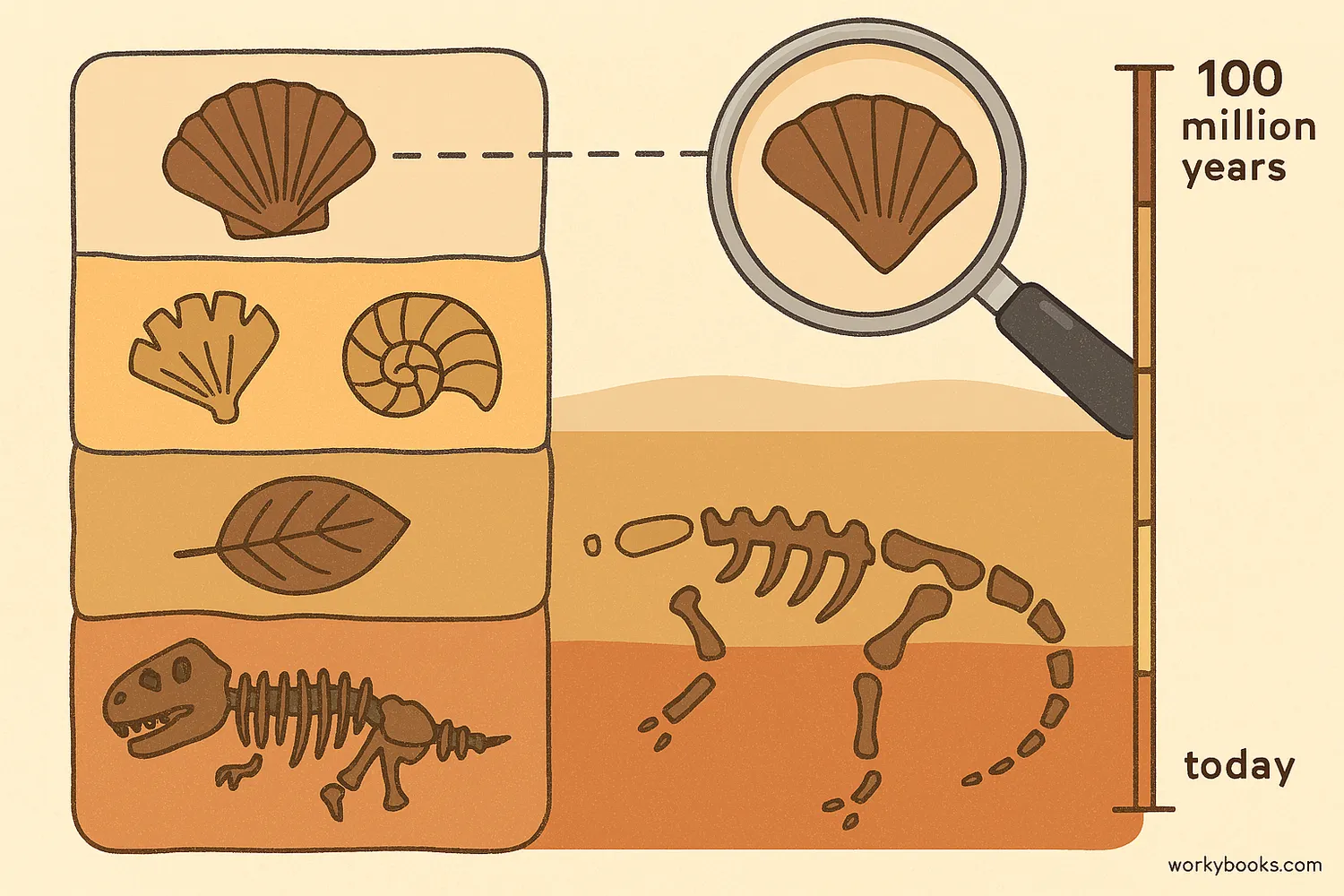
The fossil record is like Earth's history book written in stone! It's the collection of all fossils that have been found around the world.
Fossils are the preserved remains or traces of ancient plants, animals, and other organisms. When we study these fossils and arrange them by age, they tell us the story of how life has changed on our planet over millions of years.
Science Fact!
The word "fossil" comes from the Latin word "fossilis" which means "dug up." Most fossils are indeed discovered by digging into the Earth's layers.
How Fossils Form
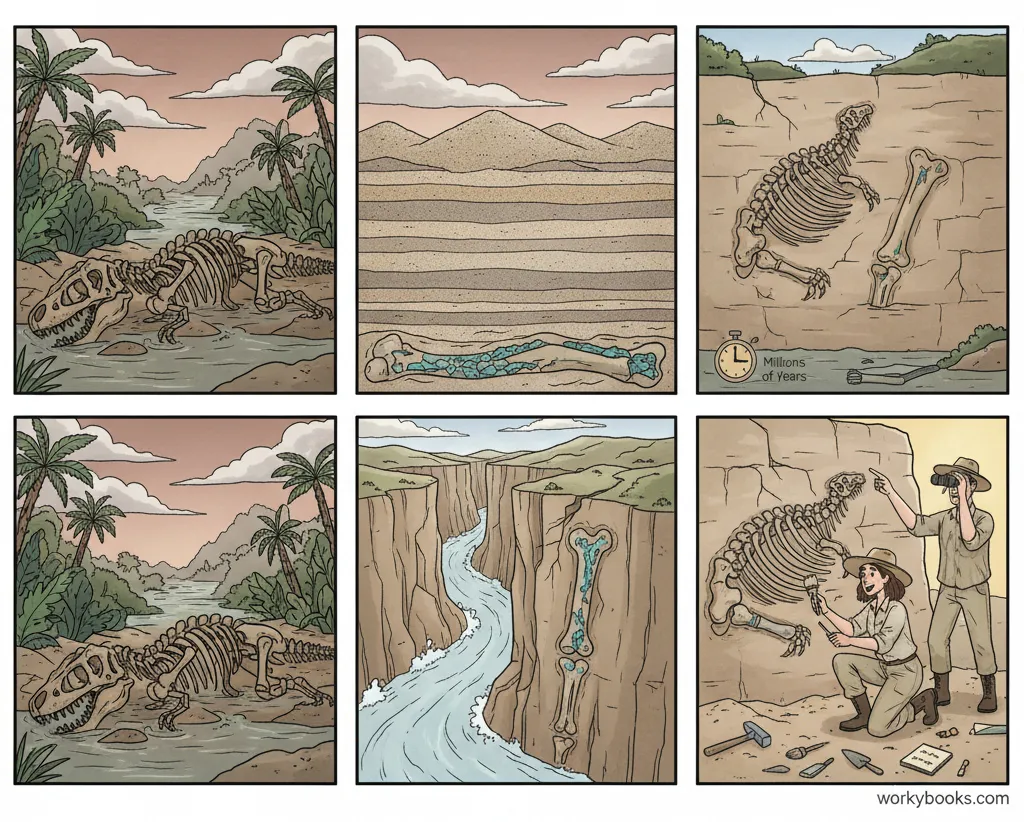
Fossils form in special ways when plants or animals are preserved after they die. This doesn't happen to every organism - it requires very specific conditions:
Burial
The organism gets quickly covered by sediment like mud or sand
Decomposition
Soft parts decay, but hard parts like bones or shells remain
Mineralization
Minerals from water replace the original material
Discovery
After millions of years, erosion or digging exposes the fossil
The entire process takes millions of years. Some fossils are actual preserved remains (like insects in amber), while others are just impressions or molds of organisms.
Why the Fossil Record is Important
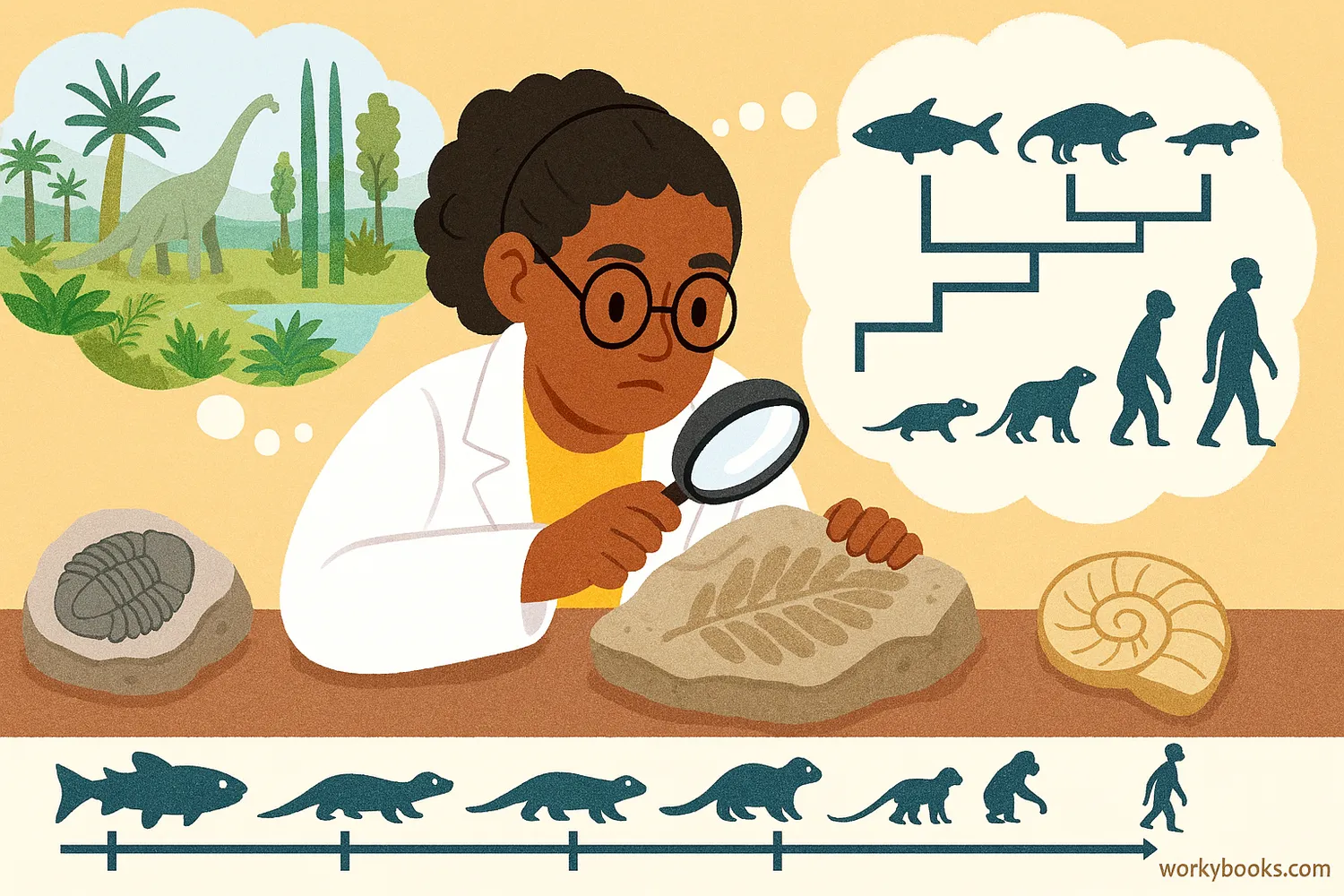
The fossil record is incredibly valuable because it helps scientists understand:
Evolution
How species have changed and adapted over time
Extinction Events
When and why species disappeared from Earth
Ancient Environments
What Earth's climate and geography were like long ago
Dating Rocks
Using index fossils to determine the age of rock layers
Without fossils, we would know much less about dinosaurs, early humans, and how life on Earth has developed over billions of years.
Did You Know?
Index fossils are from species that lived for a short time but were widespread. They help scientists date rock layers accurately.
Fossil Record Examples
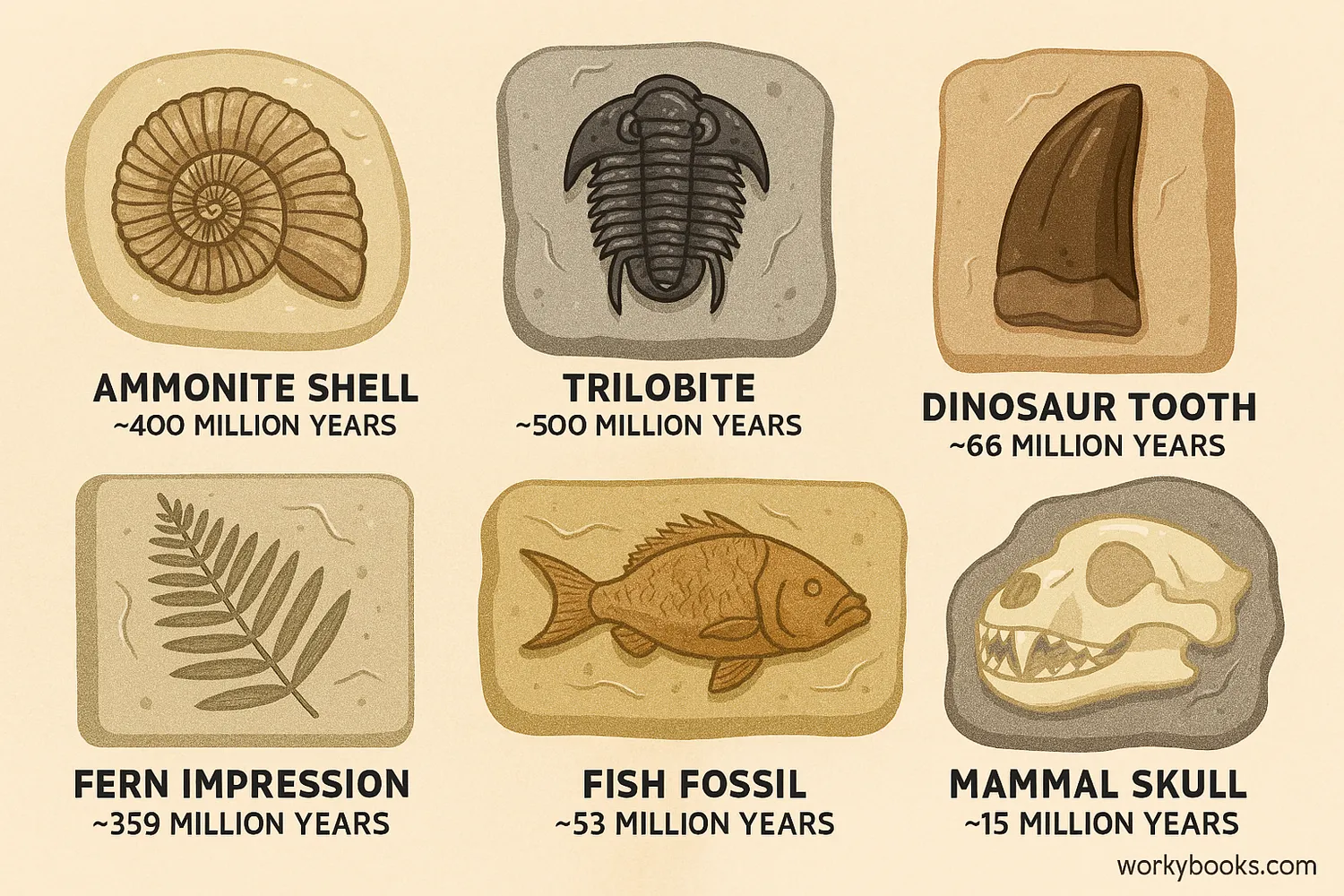
There are many different types of fossils that help scientists understand the history of life:
Trilobites
Ancient marine arthropods that lived over 250 million years ago
Ammonites
Spiral-shaped sea creatures related to modern squid
Dinosaur Bones
Preserved skeletons of famous creatures like T-Rex and Triceratops
Plant Fossils
Impressions of leaves, ferns, and ancient trees
Trace Fossils
Footprints, burrows, and other evidence of activity
Each type of fossil provides different clues about ancient life and environments. Body fossils show us what organisms looked like, while trace fossils tell us about their behavior.
Human Fossil Record
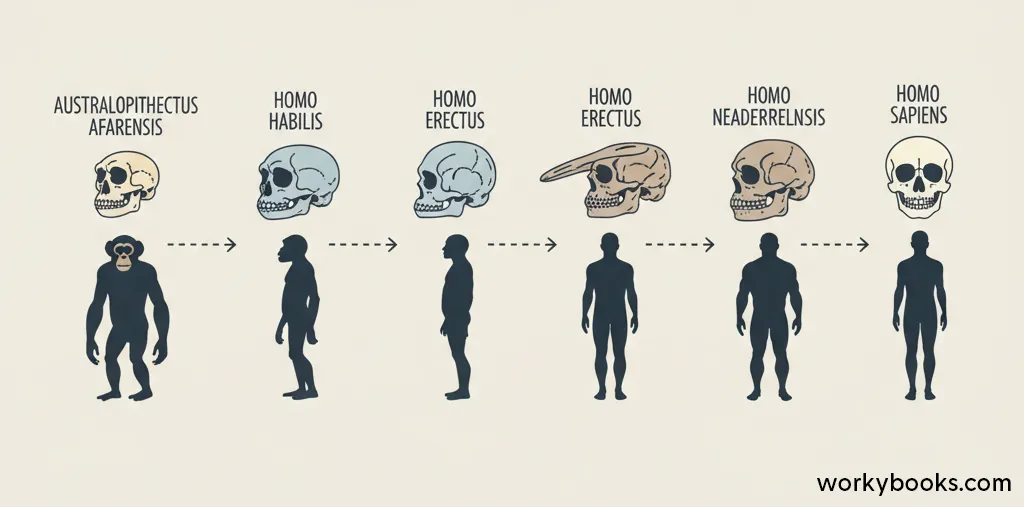
The human fossil record shows how our species, Homo sapiens, evolved over millions of years. Key discoveries include:
Lucy
A 3.2 million-year-old Australopithecus skeleton discovered in Ethiopia
Neanderthals
Our close relatives who lived in Europe until about 40,000 years ago
Homo erectus
Early humans who first used fire and complex tools
Homo habilis
One of the earliest members of our genus, known as "handy man"
These fossils help scientists understand how humans developed larger brains, began walking upright, and developed complex tools and cultures.
Did You Know?
The oldest known human fossils are about 300,000 years old, discovered in Morocco. This suggests our species is older than previously thought.
Fossil Record Quiz
Test your knowledge with this quiz! Answer all 5 questions to see how much you've learned about the fossil record.
Frequently Asked Questions
Here are answers to some common questions about the fossil record:
Science Facts About the Fossil Record
Discover some fascinating facts about fossils and what they tell us about Earth's history!
Oldest Fossils
The oldest fossils are of microscopic organisms called stromatolites that lived about 3.5 billion years ago! These ancient life forms helped create Earth's oxygen-rich atmosphere.
Dinosaur Discoveries
The first dinosaur fossil was scientifically described in 1824. It was named Megalosaurus, which means "great lizard." Since then, scientists have identified over 700 dinosaur species!
Ice Age Giants
During the last Ice Age, giant mammals roamed the Earth, including woolly mammoths, saber-toothed cats, and giant ground sloths. Many of these species became extinct as the climate warmed.
Amber Time Capsules
Amber fossils preserve ancient organisms in incredible detail. Some amber contains insects that became trapped in tree resin millions of years ago, preserving them perfectly like natural time capsules.


